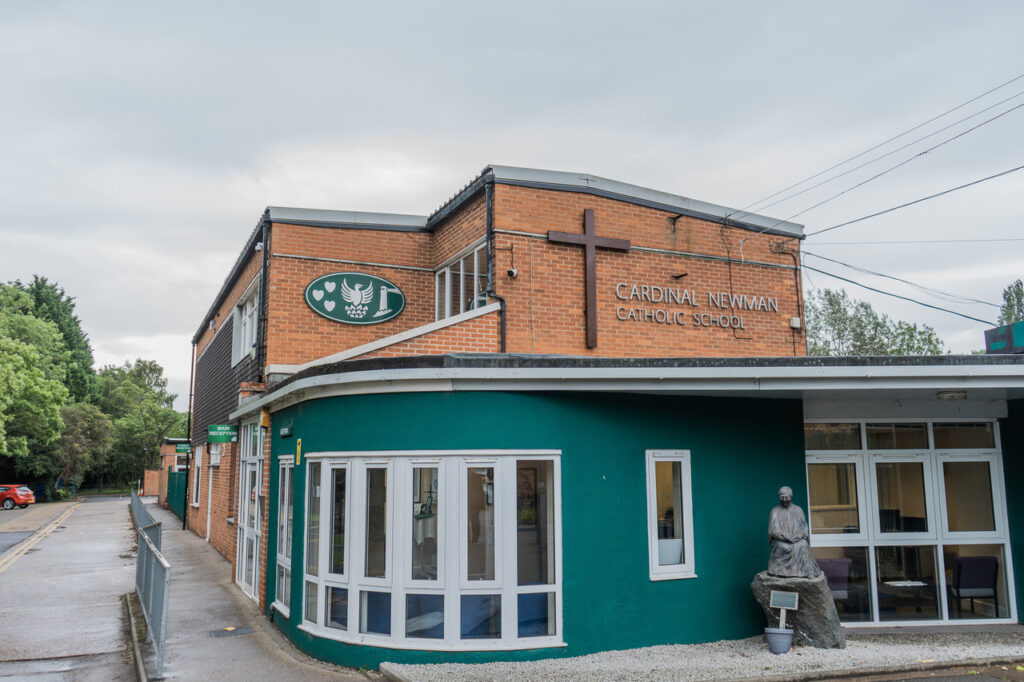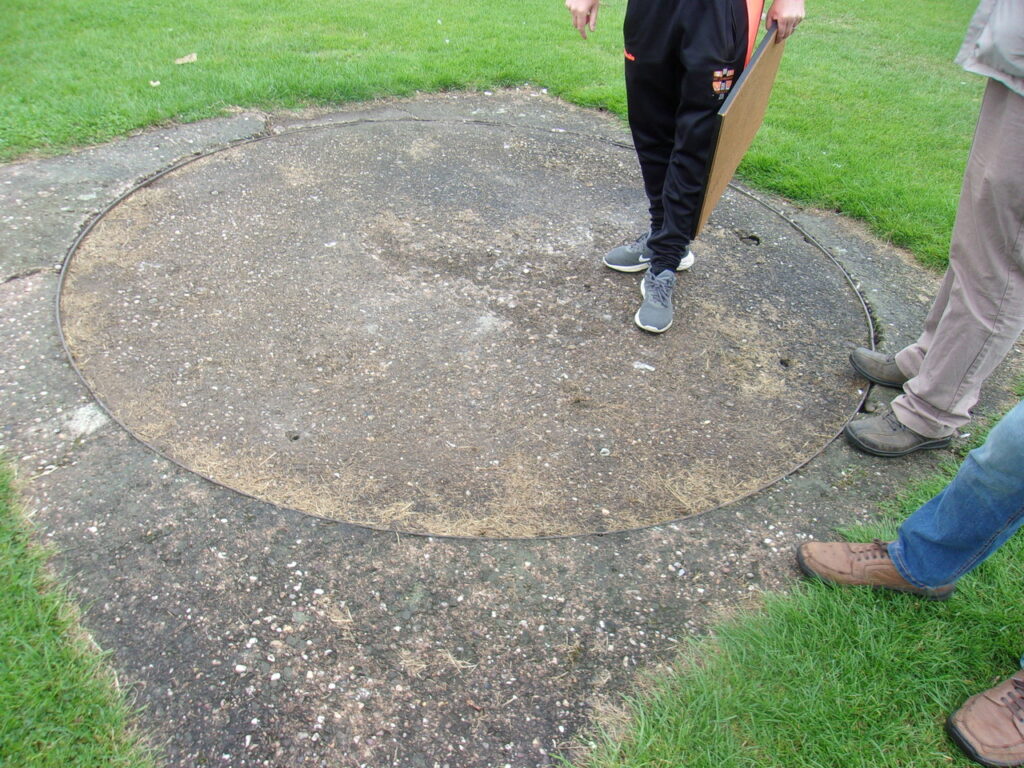
CovSoc founder member, Paul Maddocks, tells us about a visit that some members of the Coventry Society made over the summer. Paul writes…
The Coventry Society is interested in all aspects of the city, its history, environment, art and architecture. So, when some of us had the opportunity to have look around Cardinal Newman Catholic School and Holy Family Catholic Church we were only too pleased to attend.
The original offer came from Rhys Davies, a history teacher at Cardinal Newman School and it was he who showed us around what we found to be a very large school complex. This invitation came about due to the fact that the school is about to go through a major change, with a new building replacing the original school buildings. This is due to a few factors: different teaching practices, access, energy and sustainability challenges. But most of all the school intake has almost doubled.

What first impressed us was that the school had been built to a very high standard with lovely coloured brickwork rather than steel-clad temporary buildings. As well as the usual admin buildings, sports halls etc, typical of Coventry schools built at that time, it had “House Blocks”. These had assembly and canteen facilities downstairs and classrooms upstairs. Each block had class rooms for a different subject – History, Science, English etc.
We were shown into and around all the buildings, which on school days must have been a busy sight to see, with all the students changing classrooms or going to sports and other events. The site on Sandpits Lane is very large. On old maps the fields are named as “Brick Kiln Meadow” and “the March”. This was due to it being heavy clay and having four springs. This became a bit of a problem for the site in the early years and when it rained the area would be muddy and tend to flood.
During the Second World War it had been a military site with gun emplacements and some of the ponds are supposed to be bomb craters, but could have just been typical Arden landscape ponds. Rhys showed us an aerial photograph of the site after the war and before the school was built. You can see ‘The Pit’ which is on 19th century maps. We were also shown the round concrete gun emplacements and the overgrown but beautiful pool.

We were also shown the new state of the art large school canteen, which was opened a few years ago. This is built into the side of a hill, which means you can enter the main hall at the lower level and then go upstairs to a level which is used by the sixth form and out onto an open area and the playing fields. It is the games field that the new multi-story school building will be built on. The whole school will be within one building which helps with both energy costs and security.
The History of the School
The growth of Coventry’s Catholic population saw a vast increase in the demand for Catholic Schools in the post-war years. Bishop Ullathorne was developed between 1953 and 1956. Then Cardinal Wiseman opened in 1959. The demand was still high and land was purchased in Sandpits Lane. This was arranged by Canon Arthur Diamond, who at the time was a leading figure in the Catholic Church in Coventry and Parish Priest of Holy Family Church. Canon Diamond was the inspiration for both the new Cardinal Newman School and also the construction of Holy Family Church, which I will tell you about in a future article.
Cardinal Newman School opened it doors for the first time on the 3rd September 1969. Throughout the 1960’s there had been a ‘Comprehensive Revolution’ and this school was the first purpose built Catholic comprehensive school in the Archdiocese of Birmingham, the first Head Teacher being Harry Mellon – a leading figure in Catholic education. It was later the first catholic school in the country to become a community college. Coventry was the heart of the British motor car industry at the time and people flocked to Coventry from all over the British Isles. The main group of people associated with the church and school originated from the 3,000 Irish workers in Coventry in 1943. Many were based in Keresley Hostel and ended up living in the north of Coventry around where Cardinal Newman school now is. In addition, a high proportion of immigrants from Eastern Europe and the Commonwealth were Catholic.

Why name it Cardinal Newman? The school is named after one of England’s foremost Catholics, Saint John Henry Newman. John Newman was an Anglican Priest who converted to Catholicism in 1845. He was born in London but spent most of his life in the Midlands. He was a leading figure in the establishment of Catholic education in Britain. His writings had been a source of ideas and inspiration in the renewal of the Church that began with the Second Vatican Council. Newman was canonised on 13th October 2019, by Pope Francis in St. Peters’ in Rome. There is a lovely statue to Cardinal Newman at the entrance to the school, created by John Letts in 1994.
Paul Maddocks, August 2023
